لیتھز پر روٹر بیلنسنگ: پروڈکٹ کے معیار کو بہتر بنانے کے لیے ایک لاگت سے موثر حل
جدید مینوفیکچرنگ میں، جہاں پروڈکٹ کا معیار انتہائی اہمیت کا حامل ہے، روٹر بیلنسنگ تکنیکی عمل کا ایک لازمی حصہ بن جاتا ہے۔ تاہم، چھوٹے اور درمیانے درجے کے کاروباری اداروں کے لیے خصوصی توازن سازی کا سامان خریدنا مہنگا ہو سکتا ہے۔ اس آرٹیکل میں، ہم روٹر بیلنسنگ کے لیے لیتھز کے استعمال کے امکان کو تلاش کرتے ہیں، جو سامان کی لاگت کو نمایاں طور پر کم کر سکتا ہے اور پیداوار کی کارکردگی کو بہتر بنا سکتا ہے۔
توازن کے لیے ایک آلے کے طور پر لیتھ
خراد، اس کے ڈیزائن اور فعالیت کی وجہ سے، مختلف اقسام اور سائز کے روٹرز کو متوازن کرنے کے لیے کامیابی کے ساتھ استعمال کیا جا سکتا ہے۔ اس نقطہ نظر کا بنیادی فائدہ لاگت کی بچت ہے، کیونکہ مہنگے خصوصی آلات خریدنے کی ضرورت نہیں ہے۔ مزید برآں، لیتھ کا استعمال روٹر کے مینوفیکچرنگ کے عمل کے دوران براہ راست توازن قائم کرنے کی اجازت دیتا ہے، جس سے پیداوار کا وقت کم ہوتا ہے اور مصنوعات کی کوالٹی بہتر ہوتی ہے۔ یہ نوٹ کرنا ضروری ہے کہ موثر توازن کے لیے، روٹر کا ماس لیتھ سپنڈل کے بڑے پیمانے پر موازنہ ہونا چاہیے۔
توازن کی تیاری
توازن کا عمل شروع کرنے سے پہلے، کئی تیاری کے اقدامات کرنے چاہئیں:
- مناسب لیتھ کا انتخاب: قابل اعتماد روٹر کی تنصیب اور کمپن کی درست پیمائش کو یقینی بنانے کے لیے لیتھ میں کافی سختی اور درستگی ہونی چاہیے۔
- پیمائش کے نظام کی تنصیب: خراد پر روٹر کی وائبریشن کی پیمائش کرنے کے لیے، ایک پورٹیبل بیلنسر جیسا کہ Balanset-1A استعمال کیا جا سکتا ہے۔ اس میں وائبریشن سینسر، ایک ٹیکومیٹر، اور ڈیٹا کے تجزیہ اور اصلاحی بڑے پیمانے پر حساب کتاب کے لیے سافٹ ویئر شامل ہے۔
- تکلی کا توازن: تیاری میں ایک اہم مرحلہ خود لیتھ سپنڈل کو متوازن کرنا ہے۔ پیمائش کے نتائج پر اس کے اپنے عدم توازن کے اثر کو ختم کرنے کے لیے یہ ضروری ہے۔
اس آرٹیکل میں، میں لیتھ مشین پر ربڑائزڈ شافٹ کو متحرک طور پر متوازن کرنے میں اپنے تجربے اور طریقہ کار کو تفصیل سے بیان کروں گا - ایک ایسا حل جس کا اعتراف کرتے ہوئے، میں ابتدائی طور پر اس طرح کی مشینری کی موروثی سختی اور کافی وزن کی وجہ سے شکوک کا شکار تھا۔ حیرت انگیز طور پر، آپریشن کو بغیر کسی رکاوٹ کے انجام دیا گیا، جس نے ISO 1940 معیارات کے مطابق g 6.3 کی درستگی کی سطح حاصل کی۔
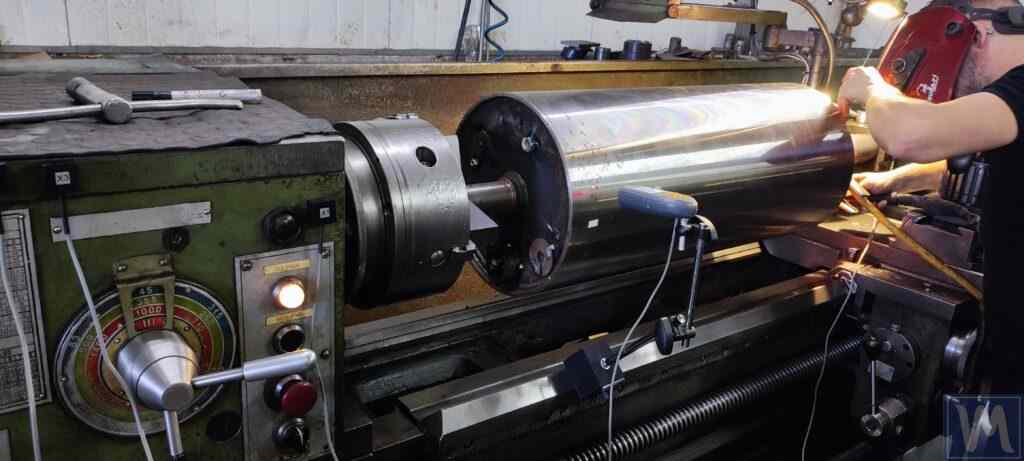
نظریہ میں لیتھ پر روٹر بیلنسنگ کا عمل
لیتھ پر روٹر بیلنسنگ کے عمل میں درج ذیل اقدامات شامل ہیں:
روٹر کو محفوظ بنانا
توازن کے عمل کے دوران استحکام کو یقینی بنانے کے لیے روٹر کو لیتھ چک میں یا مراکز پر محفوظ طریقے سے نصب کیا جاتا ہے۔
سینسرز کی تنصیب
وائبریشن سینسر بیئرنگ سپورٹ یا لیتھ باڈی پر نصب کیے جاتے ہیں، اور ایک ٹیکومیٹر کا مقصد روٹر کے ساتھ منسلک ایک عکاس ٹیپ ہوتا ہے۔
ابتدائی کمپن کی پیمائش
روٹر کی ابتدائی کمپن کی سطح اس کی آپریٹنگ رفتار سے ماپا جاتا ہے۔
ٹیسٹ وزن کو انسٹال کرنا
معلوم ماس کا ایک ٹیسٹ وزن روٹر پر نصب کیا جاتا ہے، اور کمپن کو دوبارہ ماپا جاتا ہے۔
اصلاحی عوام کا حساب لگانا
Balanset-1A سافٹ ویئر پیمائش کے نتائج کا تجزیہ کرتا ہے اور ضروری اصلاحی ماس اور ان کی جگہ کے زاویوں کا حساب لگاتا ہے۔
روٹر ماس کو درست کرنا
روٹر کے ڈیزائن اور لیتھ کی صلاحیتوں پر منحصر ہے، بڑے پیمانے پر درستگی ڈرلنگ، ملنگ، ویلڈنگ، یا دیگر طریقوں سے کی جا سکتی ہے۔
توازن کی توثیق
تصحیح کرنے کے بعد، کنٹرول کمپن کی پیمائش کی جاتی ہے۔ اگر ضروری ہو تو عمل کو دہرایا جاتا ہے جب تک کہ مطلوبہ توازن کی سطح حاصل نہ ہوجائے۔
سنکی کے لئے اکاؤنٹنگ
بیلنس کرنے کے بعد، فکسچر میں روٹر کو 180 ڈگری گھما کر اور پیمائش کو دہراتے ہوئے سنکی پن کا حساب لگانا ضروری ہے۔ Balanset-1A سافٹ ویئر میں سنکی معاوضے کے لیے ایک خاص فنکشن شامل ہے۔
پریکٹس پر متحرک توازن کا عمل:
- Rotation Frequency: Typically, the working rotation speed of this shafts ranges between 300 to 500 revolutions per minute (rpm). In this particular case, we carried out the balancing at 550 rpm.
- Setup: The rubberized shaft was mounted on the lathe machine, followed by the strategic placement of sensors, as depicted in the accompanying photographs.
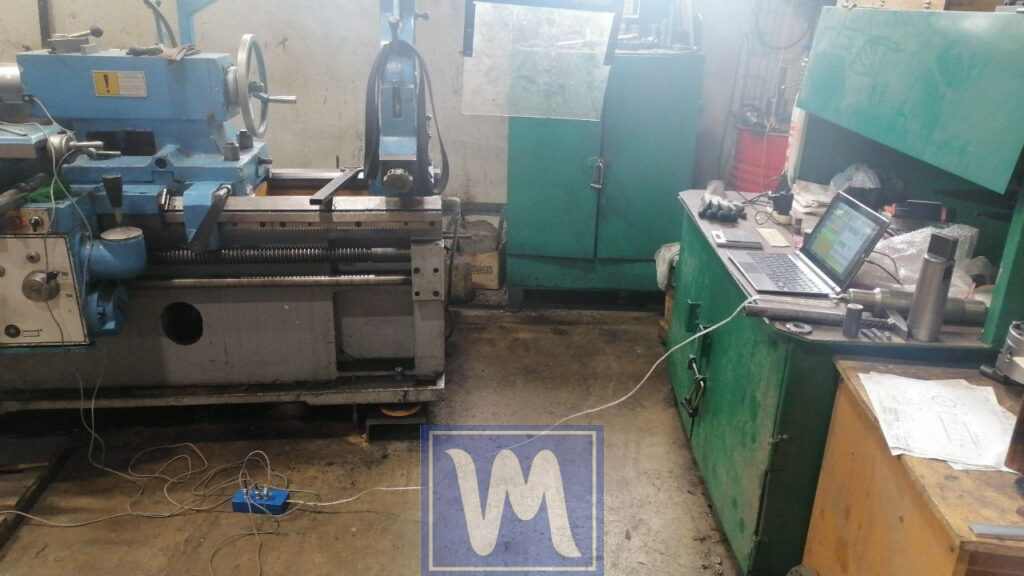
On-Site Dynamic Balancing of Rubberized Shafts Using a Lathe Machine
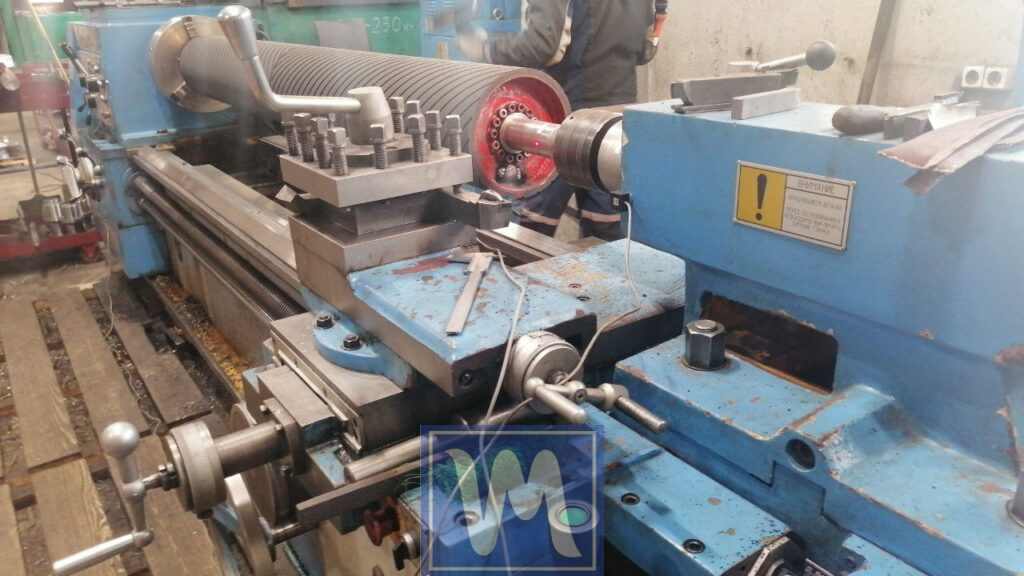
Dynamic Balancing of Rubberized Shafts
-
- Initial Vibration Readings: Before balancing, the vibration readings stood at 9 mm/sec and 17 mm/sec.
- Trial Weight: A trial weight of 340 grams was welded. This was sufficient to alter the vibration and phase readings by roughly 10%.
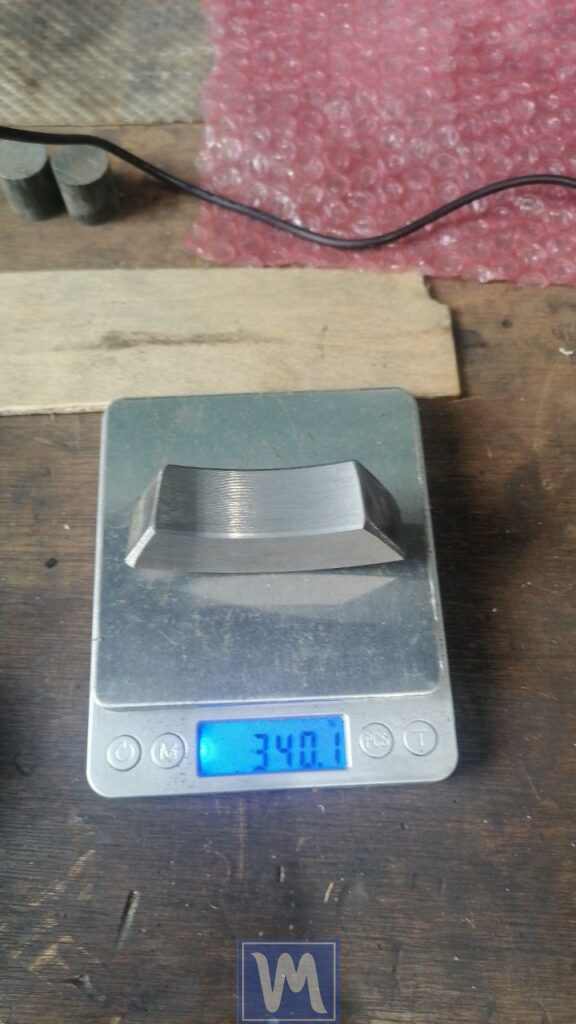
- Balancing Adjustments: Post the trial runs with the test weight, our Balanset-1A instrument indicated the need for the addition of 3100 grams on one side of the shaft and 4300 grams on the other. After these adjustments, vibration levels decreased to 2 mm/sec and 4 mm/sec.
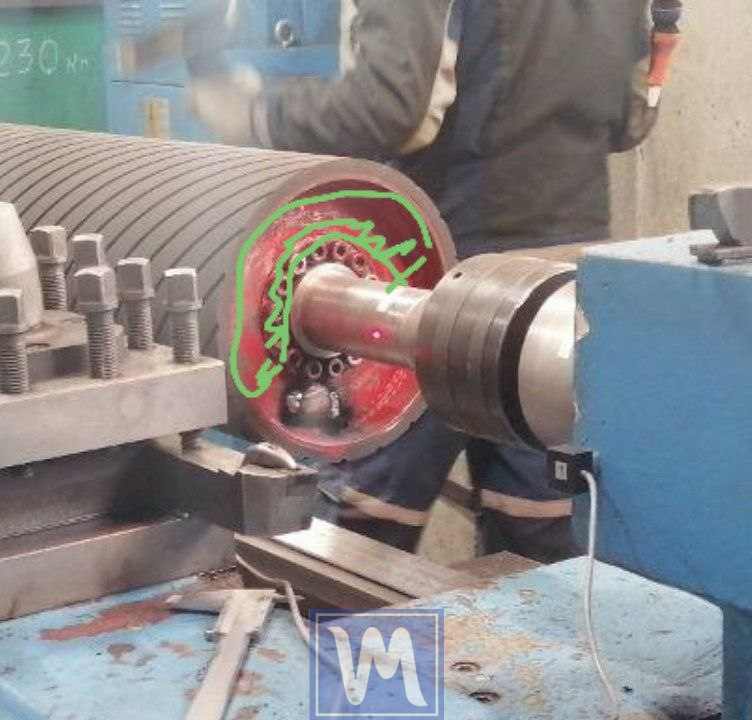
On-Site Dynamic Balancing of Rubberized Shafts Using a Lathe Machine
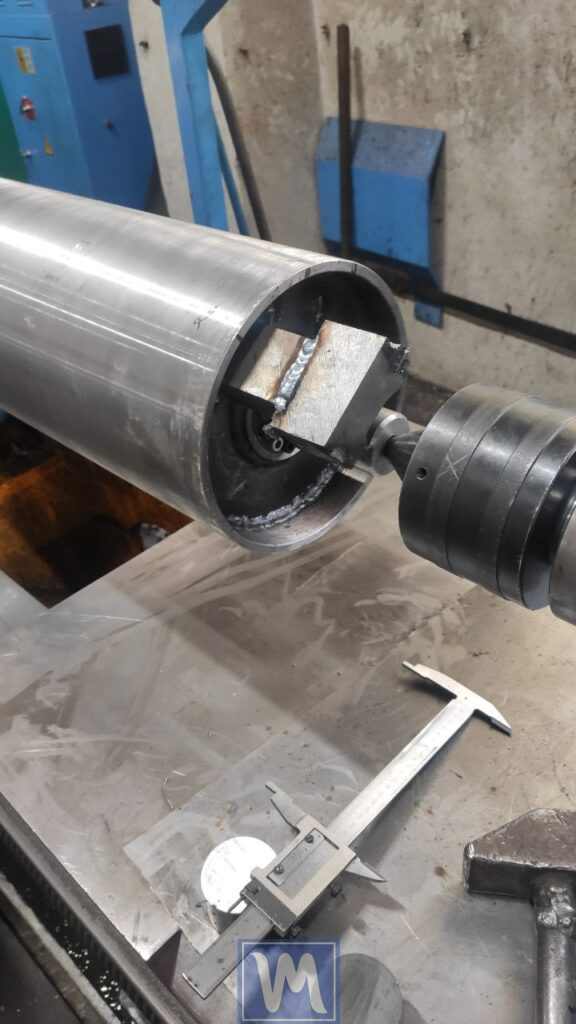
On-Site Dynamic Balancing of Rubberized Shafts Using a Lathe Machine
- Fine-tuning: To further optimize results, we proceeded to add weights of 400 grams and 700 grams. Subsequently, another round of fine-tuning was executed by adding 200 grams and 400 grams. Due to spatial constraints, the weights were welded atop one another. Ultimately, these temporary weights were replaced with precision-cut, aesthetically pleasing counterweights crafted specifically for this shaft. The final vibration readings were an impressive 0.1 mm/sec in both planes.
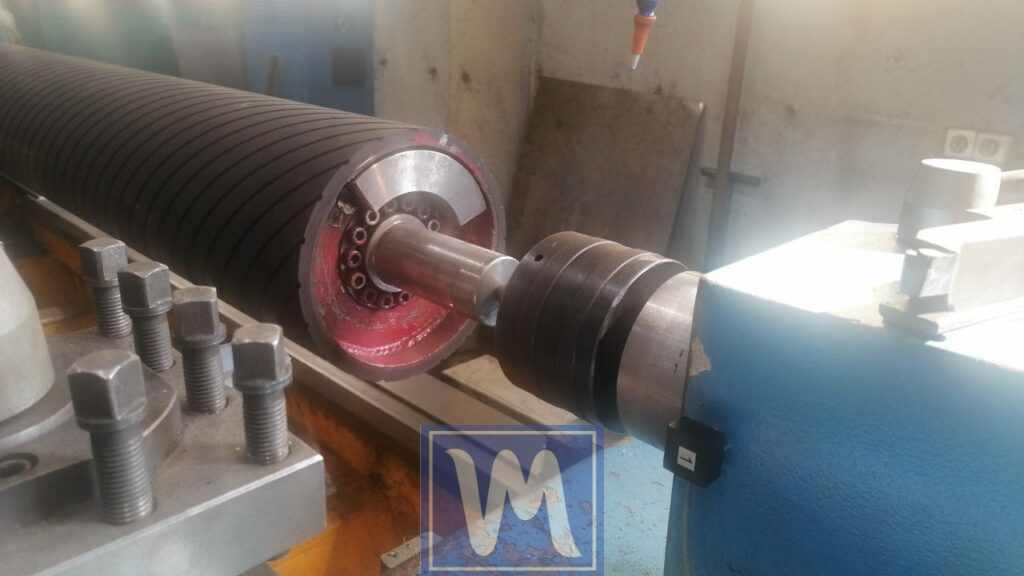
On-Site Dynamic Balancing of Rubberized Shafts Using a Lathe Machine
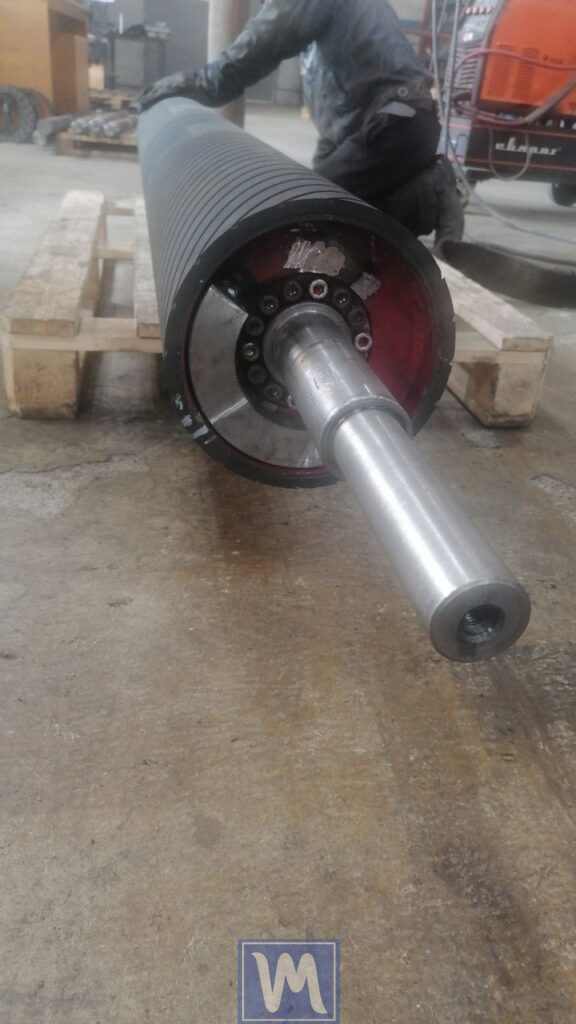
On-Site Dynamic Balancing of Rubberized Shafts Using a Lathe Machine
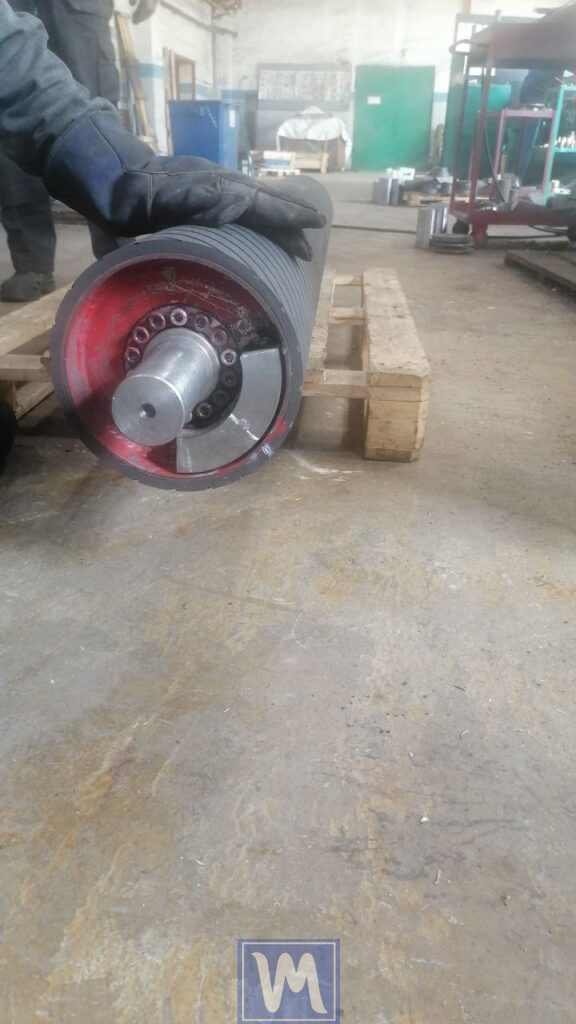
On-Site Dynamic Balancing of Rubberized Shafts Using a Lathe Machine
لیتھز پر روٹر بیلنسنگ کے فوائد
لاگت کی تاثیر
توازن کے لیے لیتھ کا استعمال خصوصی توازن سازی کے سامان کی خریداری کے اخراجات سے بچتا ہے۔
سہولت
روٹر کے مینوفیکچرنگ کے عمل کے دوران توازن کو براہ راست انجام دیا جا سکتا ہے، پیداوار کے وقت کو کم کر کے۔
اعلی معیار
جدید پورٹیبل بیلنسرز، جیسے Balanset-1A، اعلی توازن کی درستگی فراہم کرتے ہیں، کم وائبریشن لیول کو فعال کرتے ہیں اور مصنوعات کے معیار کو بہتر بناتے ہیں۔
Conclusion
لیتھز پر روٹر کا توازن ان کاروباروں کے لیے ایک مؤثر اور اقتصادی حل ہے جو مصنوعات کے معیار کو بہتر بنانے اور پیداواری لاگت کو کم کرنے کے خواہاں ہیں۔ پورٹیبل بیلنسرز جیسے Balanset-1A کا استعمال اس عمل کو آسان اور قابل رسائی بناتا ہے، یہاں تک کہ چھوٹی ورکشاپس کے لیے بھی۔
اہم یاد دہانیاں
- مؤثر توازن کے لیے، روٹر کا ماس لیتھ سپنڈل کے ماس سے موازنہ ہونا چاہیے۔
- روٹر کو متوازن کرنے سے پہلے، پیمائش کے نتائج پر اپنے عدم توازن کے اثر کو ختم کرنے کے لیے لیتھ اسپنڈل کو خود متوازن ہونا چاہیے۔
- بہترین نتائج حاصل کرنے کے لیے، اعلیٰ معیار کے ماپنے والے آلات استعمال کرنے اور توازن کے طریقہ کار پر سختی سے عمل کرنے کی سفارش کی جاتی ہے۔
لیتھز پر روٹرز کو متوازن کرنا آپ کی پیداوار کے مستقبل کی طرف ایک قدم ہے، بہتر مصنوعات کے معیار، کم لاگت، اور آپ کے کاروبار کی بڑھتی ہوئی مسابقت کے ذریعے ادائیگی۔
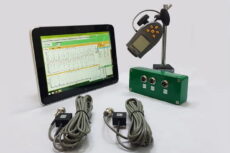
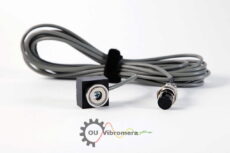
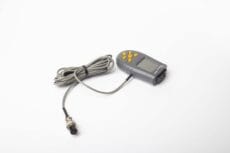
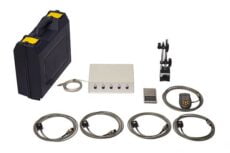
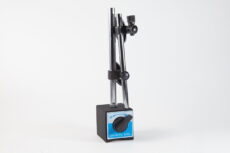

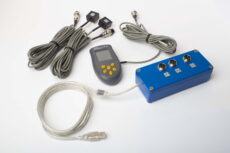
0 تبصرے